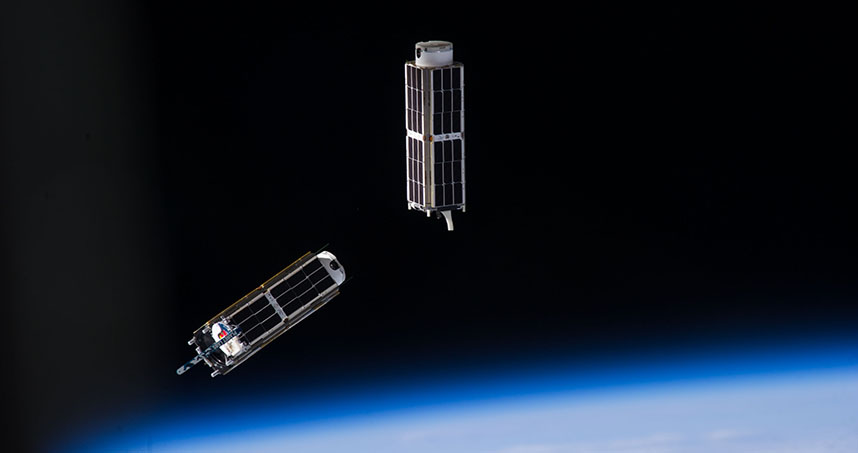Northwestern Experiment to Orbit Earth
The freeze-casting experiment will be conducted in a miniature, low-orbit satellite
Objects orbiting the Earth include: the moon, more than 2,000 satellites, the International Space Station, an abundance of space junk, and soon, a Northwestern experiment.
Advised by Northwestern Engineering’s David Dunand, a team of Northwestern University students recently received an award from NASA to send its freeze-casting experiment into orbit. The project will be held inside a CubeSat, a miniaturized satellite (10 x10 x30 cm) used for space research and education, which will be shot into space next year.
 “We are very proud that Northwestern is launching its first CubeSat to low-Earth orbit, joining more than 150 university CubeSats launched to date,” said Dunand, James N. and Margie M. Krebs Professor of Materials Science and Engineering. “It is particularly rewarding that the project is led and driven by undergraduate students from five departments and three schools.”
“We are very proud that Northwestern is launching its first CubeSat to low-Earth orbit, joining more than 150 university CubeSats launched to date,” said Dunand, James N. and Margie M. Krebs Professor of Materials Science and Engineering. “It is particularly rewarding that the project is led and driven by undergraduate students from five departments and three schools.”
With funding from NASA’s Undergraduate Student Instrument Project (USIP), students at the University of Illinois at Urbana-Champaign will build the CubeSat infrastructure. Northwestern students, led by undergraduate Kristen Scotti, will design and build the freeze-casting instrumentation within the CubeSat and operate it. NASA will cover expenses for the launch and flight.
The Northwestern team has already performed its experiment twice in near-zero gravity on NASA’s “Weightless Wonder” reduced gravity aircraft. During those flights the teams created foams made of titanium oxide through a process called freeze casting. When titanium oxide nanoparticles are suspended in water and frozen, the ice crystals push the nanoparticles into regions where they are concentrated. The ice crystals are then removed by sublimation, leaving behind a highly porous nanoparticle scaffold.
The Northwestern team has been freeze casting a mixture of titanium oxide and water to develop a new material for solar cells. But freeze casting is highly useful for creating everything from pharmaceuticals and biomedical implants to battery electrodes.
The experiment will benefit from orbit because structures created in zero gravity are more regular than those created in the lab. And while the Weightless Wonder offers a near-zero gravity experience, the orbiting CubeSat will reduce gravity even further and offers a longer time for testing.
“Gravity confuses everything tremendously,” said Scotti, who is studying biology in the School of Professional Studies. “By turning it off, we can prevent convective mixing and particle settling in the suspension being frozen.”
The CubeSat also allows the experiment to run repeatedly for two years, after which the satellite hits the Earth’s atmosphere and incinerates. During its orbit, the satellite will send photos and temperature data of the water/nanoparticle suspension being directionally frozen back to Earth for examination. The team can also access the experiment twice per day for 15 minutes to send new commands or change the experimental parameters. This is much more testing time than on NASA’s Weightless Wonder, which offered bursts of microgravity in short 30-second periods.
Through its USIP research opportunities, NASA seeks to build science, technical, leadership, and project skills among undergraduate students by offering them real experience in developing and flying science or technology experiments that are relevant to NASA’s missions.
In addition to Scotti, the Northwestern team includes eight engineering students, including Youwu Fang, Jared Burns, Matt Ocana, Joe Severni, Andy McIntosh, Erin Fillingham, Emily Northard, and Lauren Kearney.
“The science — freezing suspension in zero gravity — is novel and exciting,” said Dunand, the project’s principal investigator. “The opportunity to design, build, and operate a CubeSat here in Evanston, with support from the University of Illinois, is a dream come true for our team.”
